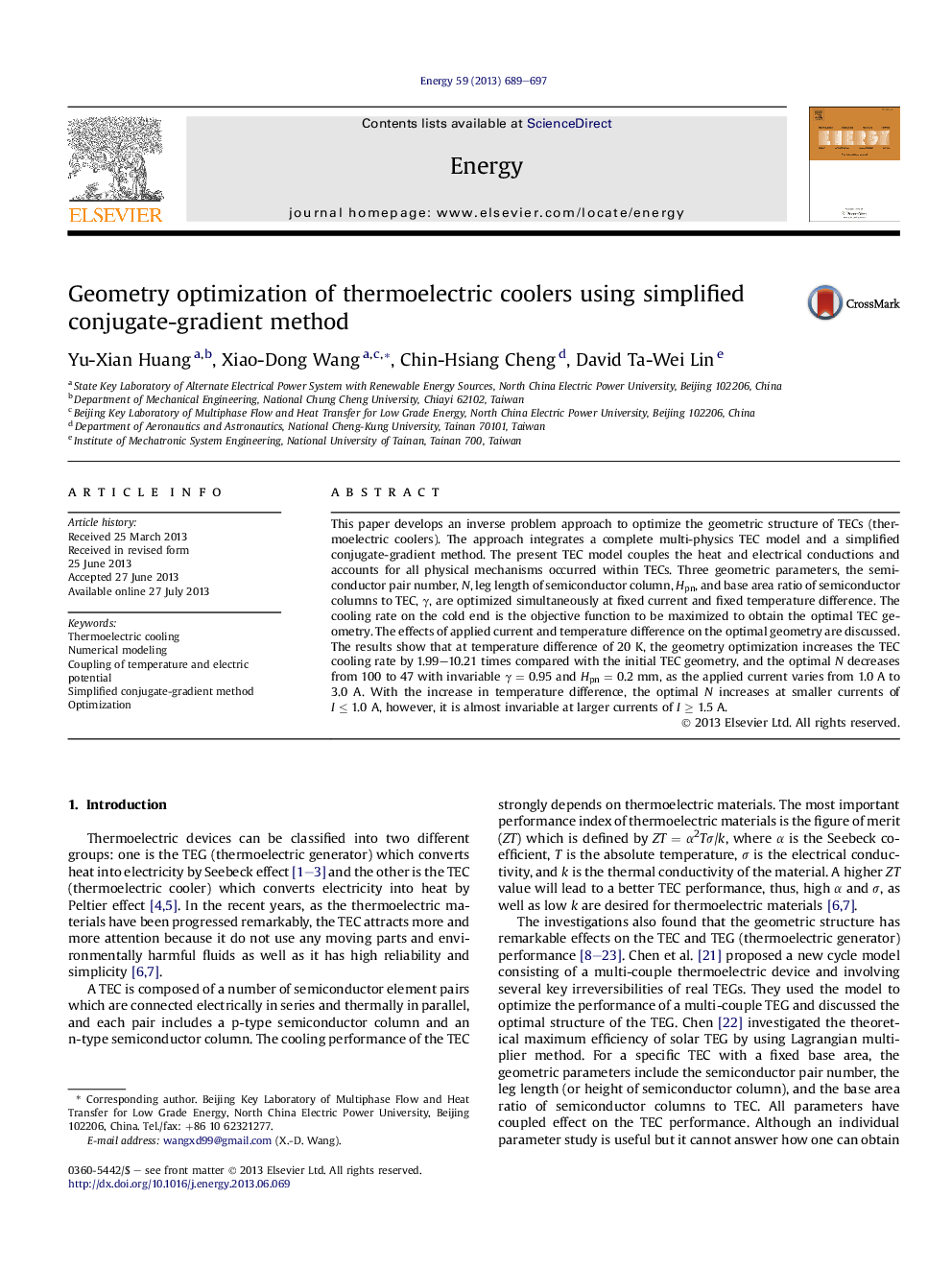| Article ID | Journal | Published Year | Pages | File Type |
|---|---|---|---|---|
| 8079248 | Energy | 2013 | 9 Pages |
Abstract
This paper develops an inverse problem approach to optimize the geometric structure of TECs (thermoelectric coolers). The approach integrates a complete multi-physics TEC model and a simplified conjugate-gradient method. The present TEC model couples the heat and electrical conductions and accounts for all physical mechanisms occurred within TECs. Three geometric parameters, the semiconductor pair number, N, leg length of semiconductor column, Hpn, and base area ratio of semiconductor columns to TEC, γ, are optimized simultaneously at fixed current and fixed temperature difference. The cooling rate on the cold end is the objective function to be maximized to obtain the optimal TEC geometry. The effects of applied current and temperature difference on the optimal geometry are discussed. The results show that at temperature difference of 20 K, the geometry optimization increases the TEC cooling rate by 1.99-10.21 times compared with the initial TEC geometry, and the optimal N decreases from 100 to 47 with invariable γ = 0.95 and Hpn = 0.2 mm, as the applied current varies from 1.0 A to 3.0 A. With the increase in temperature difference, the optimal N increases at smaller currents of I â¤Â 1.0 A, however, it is almost invariable at larger currents of I â¥Â 1.5 A.
Related Topics
Physical Sciences and Engineering
Energy
Energy (General)
Authors
Yu-Xian Huang, Xiao-Dong Wang, Chin-Hsiang Cheng, David Ta-Wei Lin,
